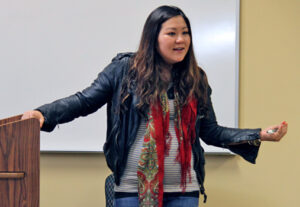
Part 3 - Teaching on the Pivot: Art as Process
(Part Three of a Five Part Serialized Blog)
Pivots or shifts in our thinking away from western and colonially oriented epistemologies are hard. The academy is a colonial entity. It is invested in colonizing us, thoroughly and into generations; colonization of thought processes and embodiments, the way we collect knowledge, our communal epistemologies, and the way we assess for learning. For BIPOC this is especially painful because we are familiar with these processes of systematic and structural erasure. We know intimately the violence of colonial erasure on our bodies, our tongues, our names, and even our food. The colonial academy, as an extension of supremacist ideologies everywhere, strives to domesticate our expression ourselves and our experiences, the way we analyze those experiences, the way we believe, create, and recreate the same tools that keep us bound up. The academy has convinced us that measures and rubrics can help us determine if what people create holds meaning or value. Meaning and value for whom? I’m not saying we need to throw away all the rubrics. I don’t hate rubrics. I am saying, we might consider that there are other ways to reflect back to students and ourselves how and what we are learning. However, the shift away from what we’ve asked ourselves and students to do from our earliest school years requires a lifetime of undoing. Often, we are learning and unlearning along with the students in our classrooms. The good news is that we can practice that cultural classroom shift together. Art can help us pivot if we let it.
Our artists found the pivot from a reading and writing classroom to a maker’s classroom, disorienting at first. We could tell students felt like we would pull the rug out from under them at any moment. We were shifting from accountability to rubrics and grading scales to accountability to community and relationships. We practiced showing up for one another in vulnerability where one person’s art was not better than another person’s art, but just as meaningful, even if differently expressed. We were shifting from ordered time where we scrunched learning into one week after another with posts and responses as proof of learning, to a more suspended understanding of time and internal and external processing and contemplative time as work
At first, this type of conversation occurred frequently:
Artist: “I don’t have to write a research paper on this material?”
Professors: “No, it’s there to inspire your creativity and challenge you. Show us what you’ve learned through your art and in your check-ins.”
Artist: “So, I only have to purchase art supplies? There’s no booklist?”
Professors: “Yes. Only art supplies. You are going to read, listen, and watch things in class, but we will provide them.”
Artist: “I’m not a real artist, so does that mean I won’t do well in this class?”
Professors: “You are a real artist. Did you do the piece? Did you colleagues and co-artists learn from your piece? Did you learn from their pieces? Show us how you are growing and being challenged. Push yourself and you’ll do well.”
As they started each piece, we asked artists to reflect on themselves, the tangle of pain and joy in their lived experiences, the world, current events, and what Spirit was saying to each of them through the work of their heart and hands. How was what emerged as a work of art both of them and of the divine presence? How was it both meant for themselves and for the community beyond them? Students started making art in their comfort zones, many of them started the course leaning on familiar mediums, sketching or painting. By the end of the course, artists had pressed themselves into using other mediums. At the conclusion of the semester, we had digital art, sculptures, wire art, woodwork, poetry, and photography. We incorporated oral storytelling in small and large group synchronous sessions. Artists told us the stories that inspired their work, their daily experiences, their theological reflections on the world, and even shared ancestral wisdoms with one another. Sometimes, in response to the stories and the histories, there was only silence. We silently and carefully held one another through our little zoom boxes on the screen. Silence also teaches. Silence is also part of the process.
Leave a Reply